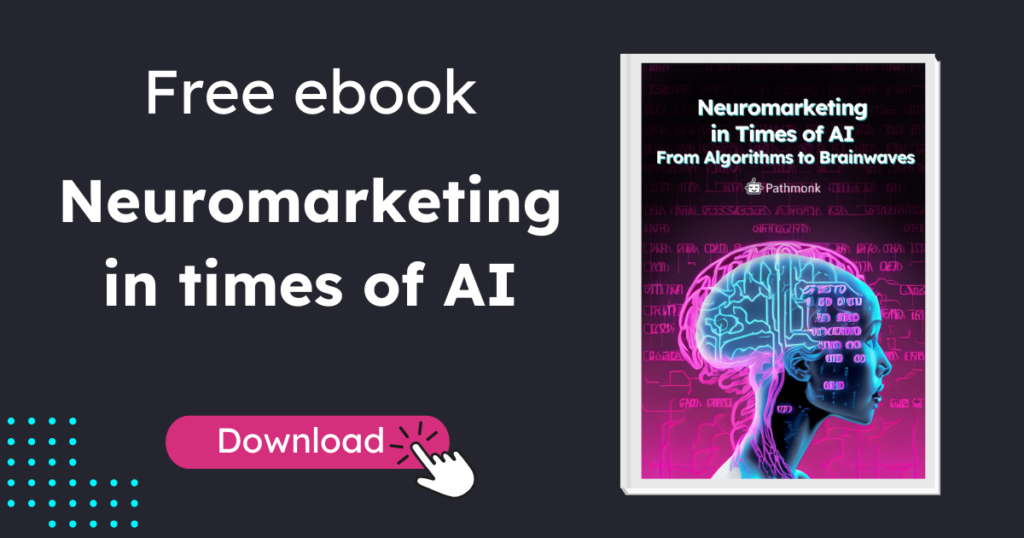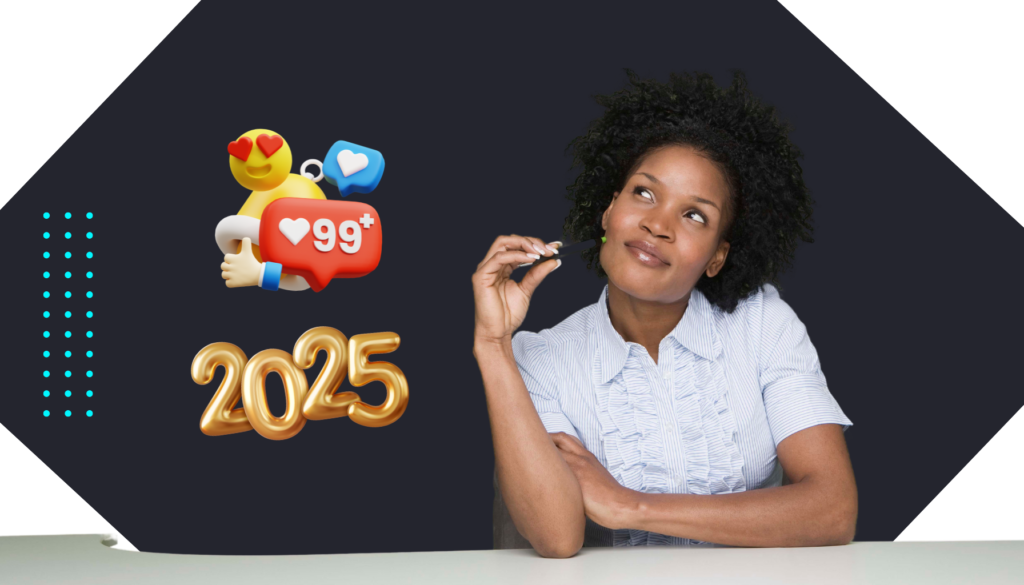
2025 is right around the corner and we all know what that means: New Year’s resolutions.
2024 wasn’t exactly a walk in the park for marketers. Budgets were tighter, competition got fiercer, and let’s not even talk about the content treadmill you’ve been running. If it feels like the rules keep changing while you’re mid-play, you’re not alone.
But as marketers, adaptation is in our DNA. So, while we acknowledge the grind, let’s not stay stuck there. After all, the beginning of a new year is the perfect time to create new resolutions.
So, take a breath, dust off your creativity, and get to work on a smarter, sharper, bolder strategy for the year ahead. Here we’ve prepared some ideas of where you can invest your time – and money – to generate more results and raise the bar in 2025.
Table of Contents
1. Invest Some Time Studying Neuro-marketing
Neuro-marketing has moved beyond academic journals and it’s becoming a guiding principle for seasoned marketers. By understanding how the brain reacts to stimuli—like colors, sounds, and narratives—marketers can refine their strategies to tap into emotions, memories, and decision-making processes.
At its core, neuro-marketing uses insights from neuroscience and behavioral psychology to understand why people make decisions. Studies have shown that up to 95% of purchasing decisions occur subconsciously, driven by emotional and instinctual reactions rather than purely logical thought.
While tools like EEG scans or eye-tracking might not be in every marketer’s toolkit, the principles they uncover can inspire smarter, more human-centered marketing. Here are some practical examples based on neuroscience research:
- Storytelling: Research from Princeton University shows that a good story activates the same neural pathways in the storyteller and the listener, creating a sense of connection. This means your campaigns should focus less on features and more on the story behind your product.
- Visual cues: Studies reveal that warm colors like red and orange often evoke excitement and urgency, while cooler tones like blue can communicate trust and calm. Understanding these principles helps marketers optimize visuals, even without costly tech.
- Emotional peaks and memory: A 2023 Nielsen study confirmed that ads triggering emotional highs are 23% more likely to drive purchase decisions and improve brand recall by up to 40%. Knowing when and how to create emotional peaks can make your messaging unforgettable.
And even if your budget doesn’t allow for biometric research – and most of ours doesn’t, you can draw inspiration from brands applying neuro-marketing principles effectively.
Hyundai used EEG scans to test customers’ brain responses to car designs, optimizing aesthetics to boost satisfaction. While EEG tech isn’t accessible to all, marketers can replicate this concept by testing visuals and layouts, guided by design psychology principles.
Netflix analyzes audience attention spans and emotional reactions to trailer pacing. While they use advanced data, the takeaway for most marketers is clear: timing and pacing in video content can significantly impact engagement.
But remember: you don’t need an EEG machine to apply the principles of neuro-marketing. By blending scientific insights with emotional intelligence, you can create campaigns that resonate beyond the rational mind. And this has everything to do with this next topic: hyper-personalization.
2. Generate More Engagement With Hyper-Personalization
Are we using personalization tools to create deeper connections, or are we just throwing data points at the wall to see what sticks?
The power of hyper-personalization isn’t just in knowing what a customer bought last week or even predicting what they’ll want next month. It’s in understanding their intent, their journey, and their emotions right now. This is where most brands falter—they personalize the “what” but ignore the “why.”
Marketers often stop short of this level of granularity because, well, it’s hard. But this is where the magic happens. Brands like Spotify and Netflix thrive on their ability to read not just behaviors but moods. How many times have you felt like Spotify “just gets you” with its playlist suggestions? That’s not tech; that’s emotional intelligence, executed at scale.

For hyper-personalization to truly shine in 2025, it needs a shift. And Pathmonk can be your partner in this journey.
Pathmonk leverages AI to deliver hyper-personalized interactions that match each visitor’s intent in the customer journey. Imagine a solution that dynamically adapts to user behavior, inviting visitors to engage with your content—whether it’s exploring a piece of content, signing up for a guide, or discovering a product demo.
- AI-driven personalization: Pathmonk tailors website content and offers to individual visitor preferences and behaviors, creating a unique experience for each lead, while packing your team with valuable information.
- Cookieless retargeting: With privacy regulations limiting the use of cookies, Pathmonk employs advanced algorithms to track visitor behavior without relying on third-party cookies.
- Predictive lead nurturing insights: Pathmonk provides data-driven insights into what actions and content are most likely to resonate with specific leads.
Regardless of your acquisition strategies, Pathmonk makes sure that you get more results from your existing traffic.
Increase +180%
leads
demos
sales
bookings
from your website with AI
Get more conversions from your existing website traffic delivering personalized experiences.
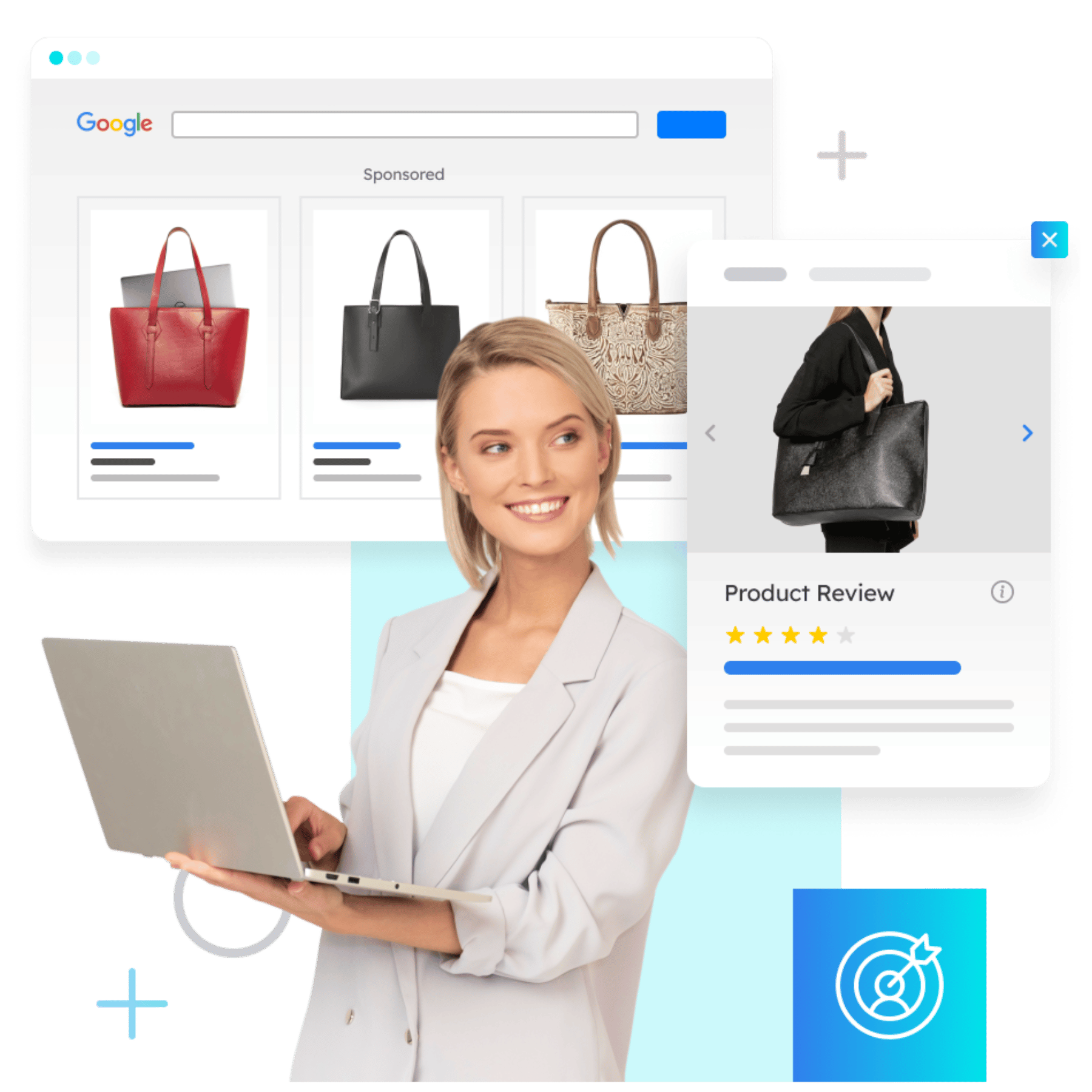
But remember: hyper-personalization is about showing your customers that you care enough to know them without making them feel like you’re peeking through their blinds. It’s not just marketing—it’s relationship-building at scale.
3. Leverage Circular Marketing for Your Industry
I know, you have read about sustainability more than enough times this year. But what can you do with sustainability to truly make your brand shine in 2025 and not be just another eco-friendly option?
Circular marketing is more than repurposing products or promoting recycling. It involves building an ecosystem where your customers actively participate in the lifecycle of your offerings, creating deeper engagement and differentiation in the process.
But here’s the catch: circular marketing only works if it’s real. Consumers are more skeptical than ever, and hollow claims about sustainability will backfire faster than you can say “greenwashing.” The brands that win will be those who tie marketing to measurable, transparent actions.
Circular marketing initiatives can take many forms, and they’re adaptable across industries. Brands like Levi’s have pioneered buyback programs, encouraging customers to return worn denim for repair or resale, all while telling stories about the garments’ second life.
Companies like Apple and Dell use trade-in programs to create closed-loop supply chains, marketing refurbished devices as premium yet eco-friendly options. Loop, a platform that partners with brands like Haagen-Dazs, delivers products in reusable packaging, creating a circular customer experience that’s both practical and sustainable.
Even service-based industries can embrace circularity. For example, SaaS companies might focus on upcycling outdated features into new, free tools for loyal customers, emphasizing innovation and long-term value.
Consumers want to participate. Circular marketing invites your audience to become co-creators in your sustainability efforts, fostering a sense of purpose and loyalty. By aligning your campaigns with actionable initiatives, you can build trust, create emotional connection and authentic differentiation for your brand.
So, what’s your first step?
4. Reimagine Shopping with Live Experiences
Shopping used to be functional. Now, it’s entertainment. In 2025, live shopping will be a goldmine of engagement and sales when done right. The trick here is to make it interactive, immersive, and, most importantly, worth tuning in for.
Increase e-commerce sales with personalized experiences
Turn your e-commerce visitors into loyal customers with AI-powered personalization.
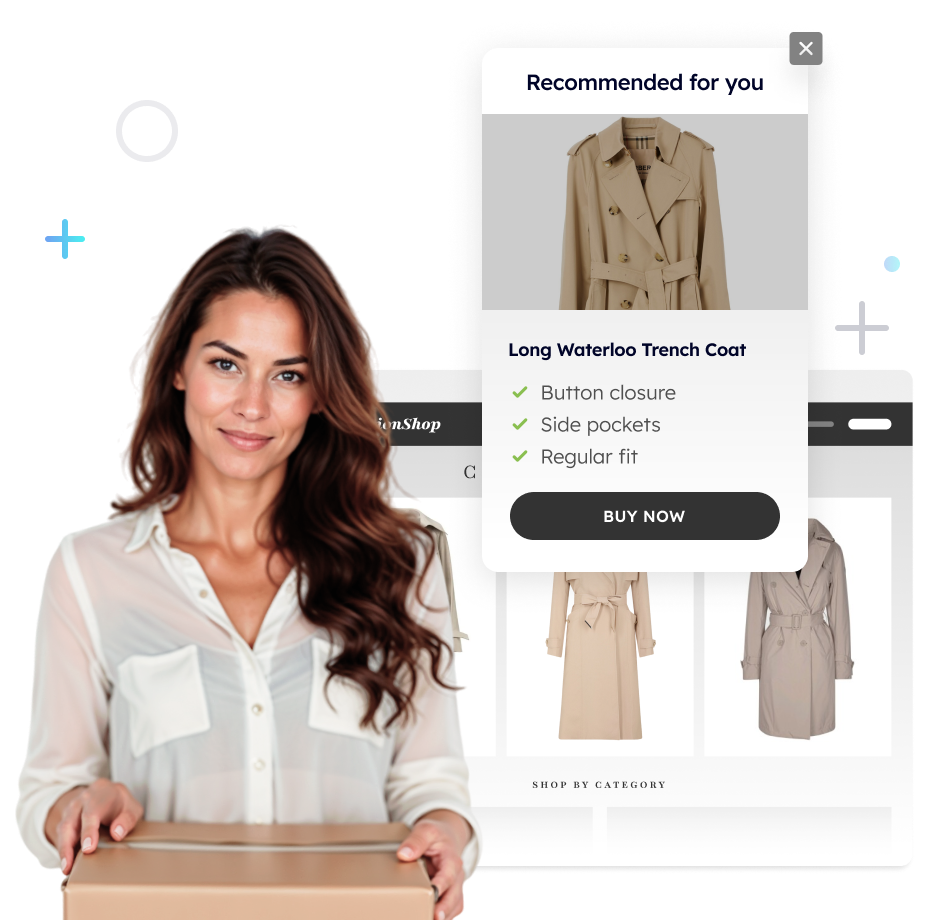
At its core, live shopping is part show, part community hangout, and part exclusive sale. It’s like those late-night shopping channels, but instead of awkwardly enthusiastic hosts, you have influencers, brand advocates, and even customers showcasing your products in real time.
People love live shopping for two reasons:
- The urgency: When something’s happening live, there’s a fear of missing out (FOMO). Add limited-time offers, and you’ve got an unbeatable combo.
- The connection: It feels personal. Shoppers can ask questions, get real-time answers, and see the products in action. No edited Instagram post or static webpage can deliver that.
And here’s the kicker: live shopping events convert at 10x the rate of traditional e-commerce experiences. Whether you’re selling skincare, sneakers, or SaaS subscriptions, the potential is massive.
Brands like Sephora and Amazon have already set the bar high. Sephora’s live streams combine tutorials with product promotions, blending value with a natural sales pitch. On Amazon Live, brands host Q&A sessions and demos that pull in thousands of viewers and drive instant sales.
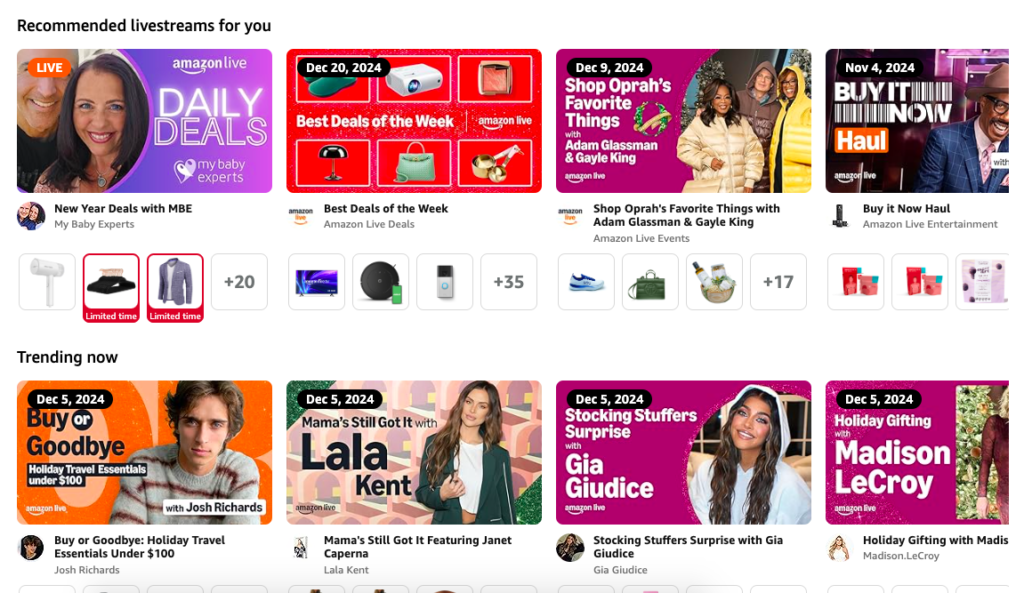
Even smaller brands are finding ways to win. A boutique clothing store live-streaming try-ons and styling tips can create just as much buzz—and close just as many sales. It’s up to you, marketer, to evaluate if this can be an opportunity for your brand.
5. Build Communities in Decentralized Spaces
By 2025, the social media game will look very different. Many tech-leading audiences are migrating to spaces where they have more control, privacy, and ownership of their data.
For marketers, this shift is a wake-up call: the old rules of engagement won’t cut it anymore. To stay relevant, it’s time to rethink how—and where—you build your brand’s digital communities.
Unlike traditional platforms like Facebook or Instagram, decentralized spaces are powered by blockchain technology and prioritize user ownership. Think token-gated communities, blockchain-based forums, or apps where users control their data and participation.
Examples include platforms like Discord for niche interest groups or Web3 communities formed around DAOs (Decentralized Autonomous Organizations). People join them because they want genuine connections, not ads crammed into their feeds.
A 2024 survey from Edelman found that 68% of consumers trust social media platforms less than they did five years ago. Decentralized spaces offer a solution: they’re community-driven, less commercialized, and often aligned with values like privacy and inclusivity.
For marketers, this doesn’t mean abandoning traditional platforms like Instagram or TikTok—but evaluating whether you should diversify where you invest your energy and resources. Does it resonate with your audience?
Even brands that are not built on technology are already experimenting with decentralized engagement. Adidas launched an NFT collection that granted holders access to exclusive events, physical products, and digital experiences. Their goal is to build an exclusive community of superfans.
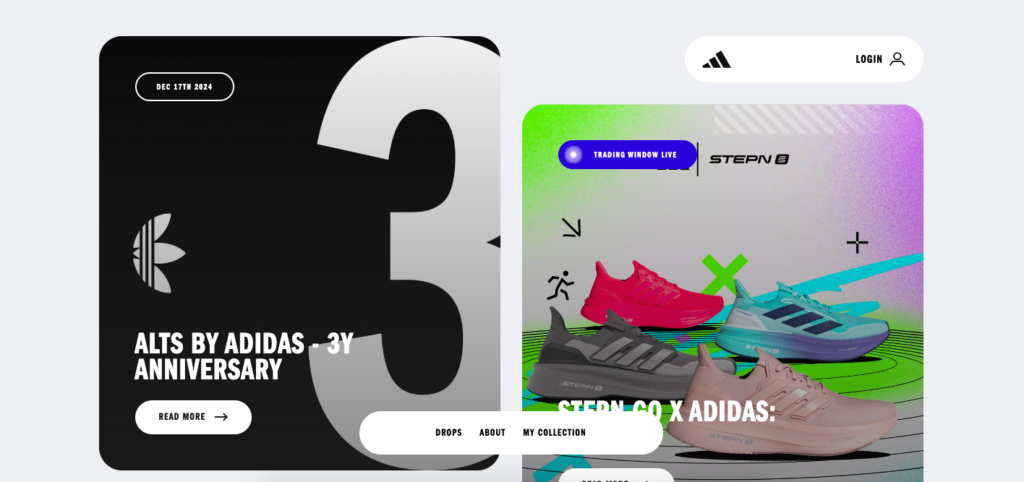
Starbucks uses blockchain tech to reward customers with NFTs in the United States, giving them access to perks and creating an interactive loyalty program that feels more personal than punch cards.
Decentralized spaces can represent a paradigm shift in how brands build trust and loyalty. More than creating a new marketing channel, you can become part of something bigger and hyper innovative. So, will you be trying it in 2025?
6. Create Employee Advocacy Through Personal Channels
People trust people, not logos. That’s why employee advocacy through personal channels is becoming more and more common. In 2025, corporate social media accounts can only go so far. But when a company’s key personalities—think executives, team leads, and subject matter experts—share their authentic perspectives, something remarkable happens. Suddenly, your brand feels human.
This trend isn’t new, but it’s gaining serious traction. Platforms like LinkedIn and Twitter are now prime spaces where professionals build not only their own personal brands but also subtly champion the companies they represent. And the result? Organic engagement that doesn’t just feel personal—it is personal.
Let’s break it down. A post from your CEO about the lessons learned from a challenging product launch? It’s relatable. It’s transparent. And it’s infinitely more engaging than a polished corporate press release.
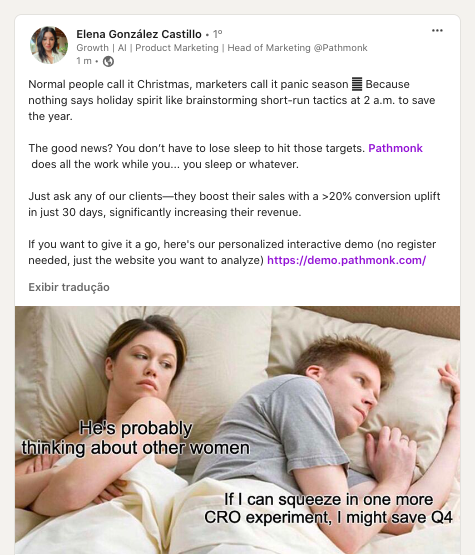
And the numbers back this up. 76% of people trust content shared by individuals over content shared by brands. Employee-shared posts receive 2x more engagement than branded posts.
You’re probably thinking: there’s no way my CEO will take time off his schedule to post on LinkedIn. Well, it’s not just executives. Mid-level leaders, engineers, designers – and yes, you guessed it, marketers – can become advocates. The magic lies in showing the humans behind the brand.
Don’t think about it as another marketing channel – after all, we are talking about using traditional social media tools. Rather evaluate changing your current social media strategy to fit this initiative.
And remember: the key is authenticity. It’s not about overselling, but giving people a peek behind the curtain.
—
Marketing isn’t about being everywhere, doing everything, for everyone to see. New Year’s resolutions for marketers must be strategic about where, when and how they approach their audience. And at the heart of this is personalization: the kind that says “We see you. We get you. We created this for you.”
Pathmonk creates next-level, meaningful engagement offering real-time personalized experiences that match user intent. With Pathmonk you can increase lead generation by 180% in 2025! To get started:
- Experience Pathmonk’s capabilities first-hand in this personalized demo, no sales calls required;
- Or book a product tour with our team for a more detailed experience.

